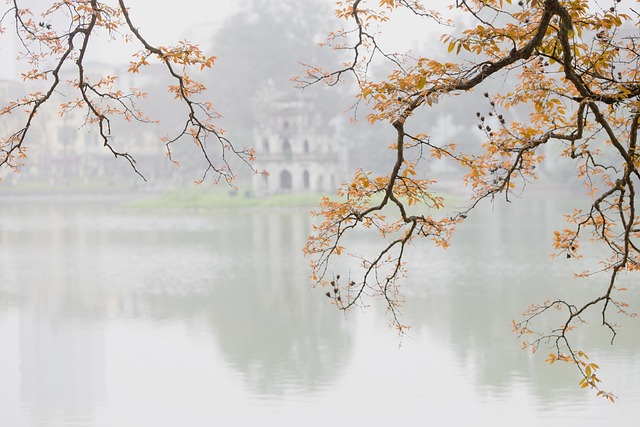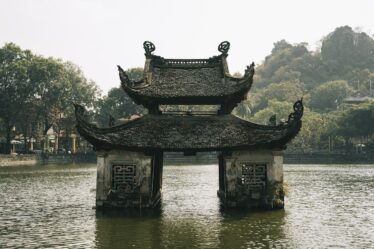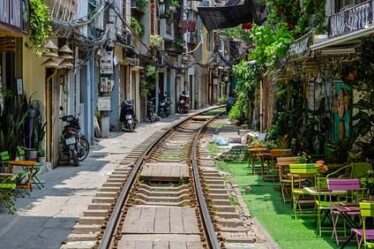
Vietnam, a captivating country in Southeast Asia, offers a rich tapestry of landscapes, cultures, and experiences. From the bustling streets of Hanoi to the serene beauty of Ha Long Bay, and the historic charm of Hoi An to the vibrant energy of Ho Chi Minh City, Vietnam is a destination that caters to all kinds of travelers. This guide provides an in-depth look at the best places to visit, things to do, and practical tips for experiencing the best of Vietnam.
Geography and Climate
Geographical Diversity
Vietnam stretches along the eastern coast of the Indochina Peninsula, bordered by China to the north, Laos to the northwest, Cambodia to the southwest, and the South China Sea to the east. The country’s diverse geography includes mountain ranges, lush highlands, fertile river deltas, and stunning coastlines.
Climate
Vietnam’s climate varies significantly from north to south. Northern Vietnam experiences four distinct seasons, with hot summers, cool winters, and a rainy season. Central Vietnam has a tropical climate with a rainy season from October to December and a dry season from January to September. Southern Vietnam is warm year-round with a wet and dry season. The best time to visit generally depends on the region, with spring (March to April) and autumn (September to November) being ideal for many areas.
Top Destinations
Hanoi
1. Old Quarter
Hanoi’s Old Quarter is a maze of narrow streets and bustling markets, known for its traditional architecture, vibrant street food, and local shops. Key attractions include Hoan Kiem Lake, Ngoc Son Temple, and St. Joseph’s Cathedral.
2. Ho Chi Minh Mausoleum
The Ho Chi Minh Mausoleum is a significant historical site where the embalmed body of Ho Chi Minh, Vietnam’s revolutionary leader, is preserved. The site includes the Presidential Palace and the Ho Chi Minh Museum.
3. Temple of Literature
The Temple of Literature is a historic Confucian temple and Vietnam’s first university. It offers a glimpse into Vietnam’s educational heritage and features beautiful traditional architecture and serene gardens.
Ha Long Bay
1. Scenic Cruises
Ha Long Bay, a UNESCO World Heritage site, is renowned for its emerald waters and limestone karsts. Visitors can embark on cruises to explore the bay’s stunning scenery, visit grottoes, and enjoy activities like kayaking and swimming.
2. Floating Villages
Exploring floating fishing villages, such as Cat Ba Island and Vung Vieng, provides insight into the traditional lifestyle of the local communities and offers a unique perspective of the bay.
Hoi An
1. Ancient Town
Hoi An’s Ancient Town is a UNESCO World Heritage site known for its well-preserved architecture, charming streets, and vibrant cultural heritage. Key highlights include the Japanese Covered Bridge, Chinese Assembly Halls, and historic merchant houses.
2. Lantern Festival
Hoi An’s monthly Lantern Festival transforms the town into a dazzling display of colorful lanterns. The festival typically takes place on the 14th day of the lunar month and is a magical experience.
3. Beaches
Hoi An is also home to beautiful beaches like An Bang Beach and Cua Dai Beach, where visitors can relax, swim, and enjoy coastal views.
Hue
1. Imperial City
The Imperial City, or Citadel, in Hue is a vast complex of palaces, temples, and fortifications that served as the former imperial capital of Vietnam. The site includes the Forbidden Purple City, which was once the residence of the Nguyen emperors.
2. Thien Mu Pagoda
Thien Mu Pagoda is a historic Buddhist temple overlooking the Perfume River. The pagoda is one of Vietnam’s oldest and most significant religious sites, featuring a seven-story tower and serene surroundings.
Ho Chi Minh City (Saigon)
1. War Remnants Museum
The War Remnants Museum provides a sobering look at the Vietnam War through powerful exhibits, photographs, and artifacts. It offers insight into the war’s impact on Vietnam and its people.
2. Ben Thanh Market
Ben Thanh Market is a bustling hub of activity where visitors can shop for local handicrafts, souvenirs, and delicious street food. The market offers a vibrant atmosphere and a variety of goods.
3. Cu Chi Tunnels
The Cu Chi Tunnels are an extensive network of underground tunnels used by the Viet Cong during the Vietnam War. Guided tours provide insight into the tunnels’ history and their role in the war.
Mekong Delta
1. River Cruises
Exploring the Mekong Delta by boat allows visitors to experience the region’s unique riverine lifestyle, including floating markets, traditional villages, and lush landscapes. Popular boat trips include those to My Tho and Can Tho.
2. Floating Markets
The floating markets, such as Cai Rang and Cai Be, offer a vibrant shopping experience where vendors sell fresh produce, local goods, and snacks from boats.
Cultural Experiences
Cuisine
Vietnamese cuisine is renowned for its fresh ingredients, vibrant flavors, and diverse dishes. Key dishes to try include:
- Pho: A fragrant noodle soup with beef or chicken, herbs, and spices.
- Banh Mi: A Vietnamese sandwich made with a French baguette, meats, pickled vegetables, and condiments.
- Goi Cuon: Fresh spring rolls filled with shrimp, pork, rice noodles, and herbs, served with dipping sauce.
- Bun Cha: Grilled pork served with rice noodles, herbs, and a flavorful dipping sauce.
Traditional Festivals
Vietnamese festivals celebrate cultural heritage and traditions. Major festivals include:
- Tet Nguyen Dan (Lunar New Year): The most important Vietnamese holiday, marked by family reunions, feasts, and traditional rituals.
- Mid-Autumn Festival: Celebrated with lanterns, mooncakes, and festivities for children.
- Hue Festival: A biennial festival featuring traditional performances, cultural events, and historical reenactments in Hue.
Practical Tips
Visa Requirements
Travelers to Vietnam may require a visa, depending on their nationality. E-visas are available for citizens of certain countries, while others may need to apply for a visa at a Vietnamese embassy or consulate.
Currency
The currency used in Vietnam is the Vietnamese Dong (VND). Credit cards are widely accepted in major cities and tourist areas, but it is advisable to carry cash for smaller establishments and rural areas.
Transportation
- Domestic Flights: Vietnam has a well-connected network of domestic flights, making travel between major cities and tourist destinations convenient.
- Trains and Buses: Trains and buses are available for long-distance travel and offer scenic routes through the countryside.
- Taxis and Ride-Sharing: Taxis and ride-sharing services like Grab are widely available in cities and offer convenient transportation options.
Health and Safety
Travelers should take standard health precautions, such as drinking bottled water, using insect repellent, and being mindful of food hygiene. It is also advisable to have travel insurance that covers health and accidents.
Conclusion
Vietnam is a country of incredible diversity, offering an array of experiences that range from exploring ancient historical sites and vibrant cities to relaxing on stunning beaches and immersing oneself in natural beauty. Whether you are drawn to the cultural richness of Hanoi, the scenic splendor of Ha Long Bay, the historic charm of Hoi An, or the bustling energy of Ho Chi Minh City, Vietnam promises a journey filled with discovery and wonder. With its welcoming people, delicious cuisine, and stunning landscapes, Vietnam is a destination that leaves a lasting impression on all who visit.

